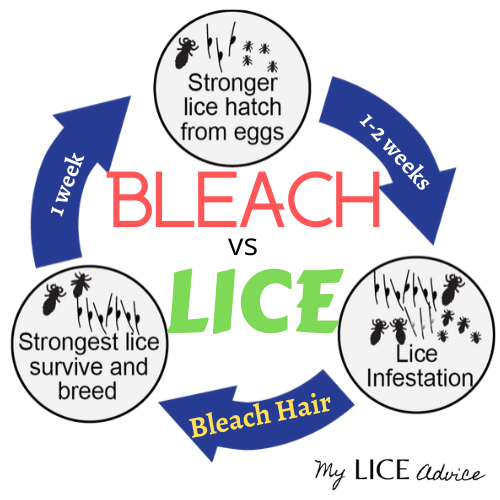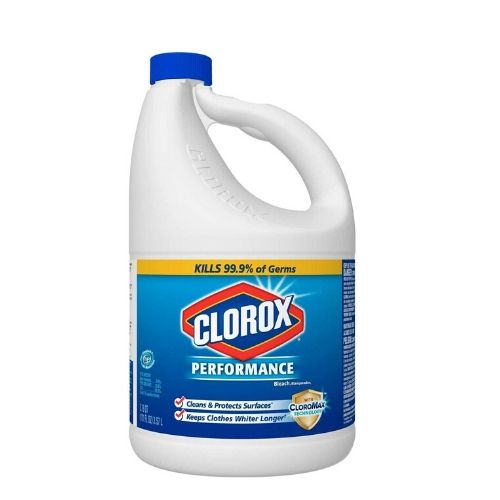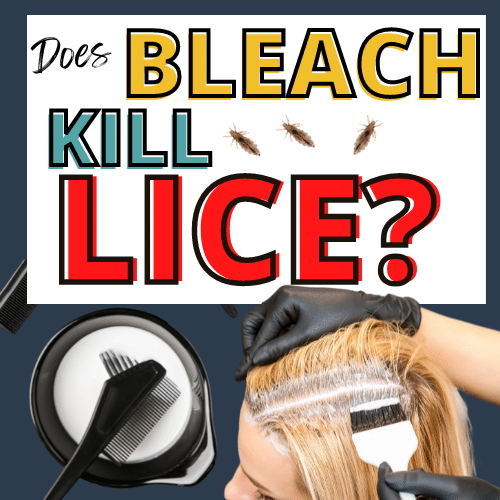Does Bleach Kill Lice? What You Need To Know!
Does bleach, that ubiquitous household cleaner, truly vanquish lice? The answer, regrettably, is a qualified no, and relying on bleach to eradicate these persistent parasites is a gamble with potentially dangerous consequences for your health and home. While bleach, or sodium hypochlorite, possesses potent disinfecting properties, its efficacy against head lice is far from guaranteed, and its use poses significant risks that outweigh any perceived benefits.
The allure of bleach as a lice treatment stems from its powerful oxidizing action, which can destroy organic matter. In theory, this could extend to lice and their eggs, also known as nits. However, the reality is far more complex. Bleach is not specifically formulated or tested for lice treatment, and its application to the scalp and hair presents a litany of problems. First and foremost, bleach is highly corrosive. It can cause severe skin irritation, burns, and allergic reactions. The delicate skin of the scalp is particularly vulnerable, and exposure to bleach can lead to blistering, inflammation, and hair loss. Inhaling bleach fumes is also hazardous, causing respiratory irritation and potentially more serious health complications.
Moreover, bleach's effectiveness against lice is questionable. While it might kill some adult lice on contact, it is unlikely to penetrate the protective shell of the nits, which are firmly attached to the hair shaft. Therefore, even if some adult lice are eliminated, the infestation is likely to persist. Furthermore, even if it does kill the lice, bleach does not remove them or their eggs from the hair; therefore, even though the lice may be dead, the body is still vulnerable to side effects of bleach.
The Centers for Disease Control and Prevention (CDC) and other health organizations do not recommend using bleach for lice treatment. They consistently advocate for safe and effective methods, such as over-the-counter or prescription lice treatments specifically designed for this purpose. These treatments typically contain insecticides like pyrethrins or permethrin, which are formulated to kill lice while minimizing harm to humans. In some cases, manual removal of nits with a fine-toothed comb is also advised to ensure complete eradication.
Beyond the health risks, the use of bleach on hair and scalp can also lead to cosmetic damage. Bleach can strip the hair of its natural oils, leaving it dry, brittle, and prone to breakage. It can also alter the hair's color, causing it to become lighter and potentially unevenly bleached. For those who have colored their hair, the use of bleach can result in a drastic shift in color, and possibly cause damage.
The risks associated with bleach far outweigh any perceived benefits when it comes to lice treatment. Instead, the best course of action is to consult with a healthcare professional or pharmacist to determine the most appropriate and safe method for eliminating lice. This will likely involve the use of a medicated shampoo or lotion, often followed by the meticulous removal of nits with a fine-toothed comb. These methods have been specifically designed and tested for efficacy against head lice, and they pose a significantly lower risk to your health and wellbeing.
Consider the case of a young mother, Sarah, living in a suburb of Denver, Colorado, who faced a persistent lice infestation in her child's hair. Sarah, driven by desperation and perhaps misinformation she had encountered online, considered using bleach as a quick fix. Fortunately, a quick search led her to a reputable website and a conversation with her pediatrician, and she ultimately decided against it. Her pediatrician strongly advised against the use of bleach, emphasizing the potential dangers to her child's health. Instead, Sarah was guided towards a safe and effective lice treatment, which she then followed with diligence. After a week of treatments and manual removal of nits, her child was finally lice-free. Sarah's experience highlights the importance of seeking professional advice and following proven methods for lice eradication. This is not only safe, but has the best chance of long-term success.
In summary, while bleach might seem like a readily available and potent solution for lice, it is not. Its use is fraught with risks, and its effectiveness is questionable. Consulting with a medical professional and using approved lice treatments is always the safer and more effective approach.
The misconception about bleach's effectiveness in killing lice often stems from its general reputation as a powerful disinfectant. People see it as a cleaning agent that can eliminate almost anything, and they may believe it can do the same for lice. However, lice and the environment of the scalp are a very different thing to the environment of a surface that is being cleaned. Surfaces can be wiped, and can be exposed to a high concentration of bleach. The scalp, however, is an extremely delicate thing, and there are many parts of the body that it protects.
The fact that bleach can be bought so readily can contribute to this misunderstanding as well. Because it is cheap and easy to buy, many people may assume it must be safe to use, or that using it isn't a big deal. But even if bleach is easy to buy, it doesn't mean it should be used for purposes for which it was not intended. Many products that can be purchased are extremely dangerous if they are not used properly. If someone were to spill bleach on a surface, it could likely be wiped down and be fine. The same cannot be said if it's spilled on a person, and this difference in risks is important to understand.
The allure of a quick fix is another contributing factor. Lice infestations can be incredibly frustrating and embarrassing, and parents are understandably eager to find a solution. In their desperation, they may turn to shortcuts like bleach without fully understanding the potential consequences. But those shortcuts often backfire. They may not kill the lice, and they can put the scalp at an even greater risk. While it can be difficult, patience is key. Following a treatment plan and waiting for the results may feel slow, but is often the only way to reach long-term success.
The lack of reliable information also plays a role. In the digital age, people often turn to the internet for answers, but not all sources are trustworthy. Many websites and social media platforms may provide inaccurate or misleading information about lice treatment, including suggesting the use of bleach. A good rule is to seek information from reliable websites like the CDC or your family doctor. Anything else is a gamble, and it's a gamble that could impact your health.
The availability of over-the-counter lice treatments should be emphasized. Unlike bleach, these products are specifically designed and tested for their effectiveness against lice. They are also formulated to be relatively safe for human use when used as directed. While some treatments may require multiple applications or may cause mild side effects, they pose a much lower risk than using bleach. Also, the packaging contains instructions and a contact number for further information and advice.
The importance of nit removal should also be stressed. Even after applying a lice treatment, it is essential to manually remove the nits, or lice eggs, from the hair. Nits are firmly attached to the hair shaft and can hatch into new lice if not removed. This can be done using a fine-toothed comb, which is often included with lice treatment kits. The process can be time-consuming, but it is a crucial step in ensuring complete eradication of the infestation. The use of nit removal can, for some people, be the only thing they need to get rid of a lice infestation.
Prevention is another important aspect of lice management. While lice are easily spread, there are steps that can be taken to reduce the risk of infestation. These include avoiding head-to-head contact with people who have lice, not sharing combs, brushes, hats, or other personal items, and washing bedding, clothing, and towels in hot water. Regular inspections of the hair can also help detect lice early, before the infestation becomes widespread. Many schools recommend regular lice checks to help prevent the spread of the infection.
Consider the case of a school in a suburban area of Minneapolis, Minnesota, where several students were found to have lice. The school nurse, aware of the potential dangers of bleach, immediately contacted parents and provided them with information about safe and effective lice treatments. The school also implemented a policy of regular head checks for all students and shared tips on lice prevention with the parents. By taking these proactive steps, the school was able to control the outbreak and protect the health of its students. Again, this case emphasizes the importance of seeking information from a professional, and the importance of taking a measured response to problems.
In conclusion, the use of bleach for lice treatment is not recommended. While it may seem like a convenient solution, the potential health risks and questionable effectiveness outweigh any perceived benefits. Always consult with a healthcare professional and use approved lice treatments and the practices mentioned above for safe and effective lice management.
It's also important to reiterate the significance of proper disposal of any items used during lice treatment. This may include used combs, and any clothing or bedding that has come into contact with the lice. Disposing of these items in a careful manner can help prevent the spread of lice.


